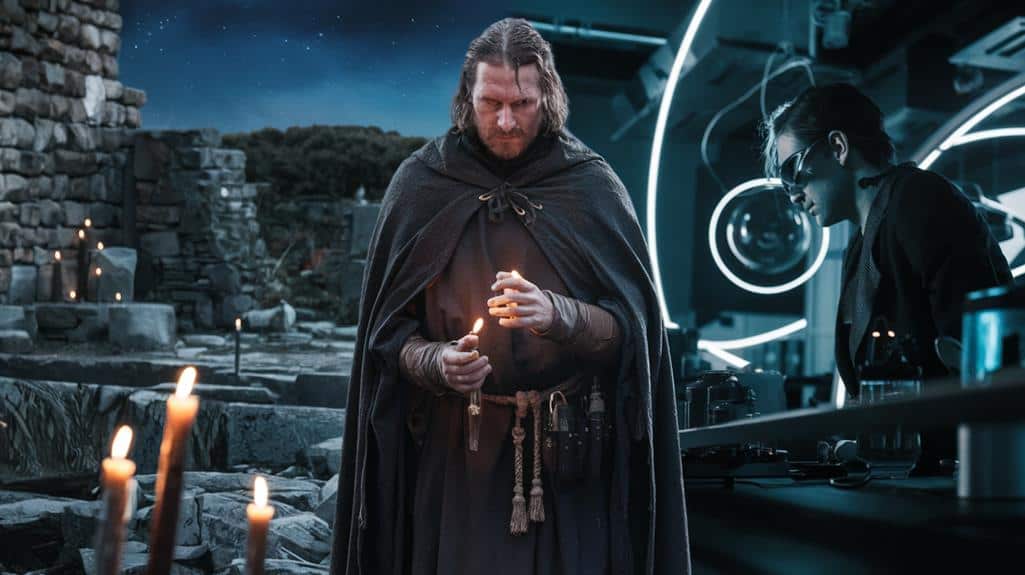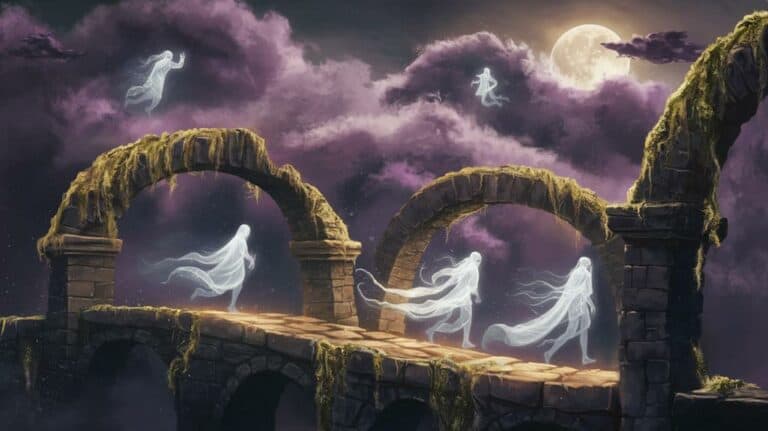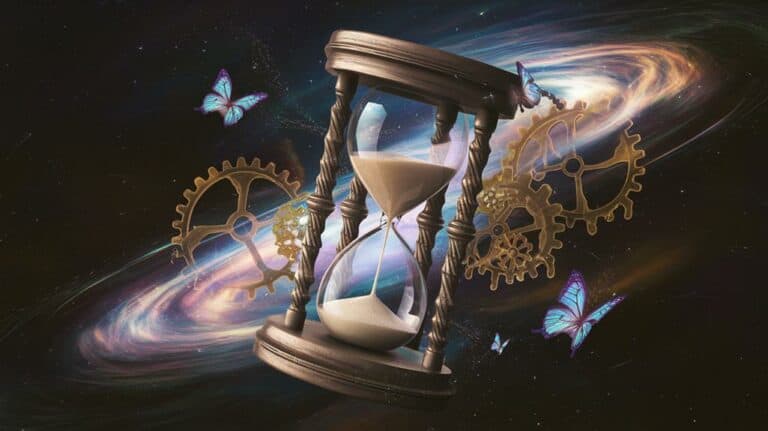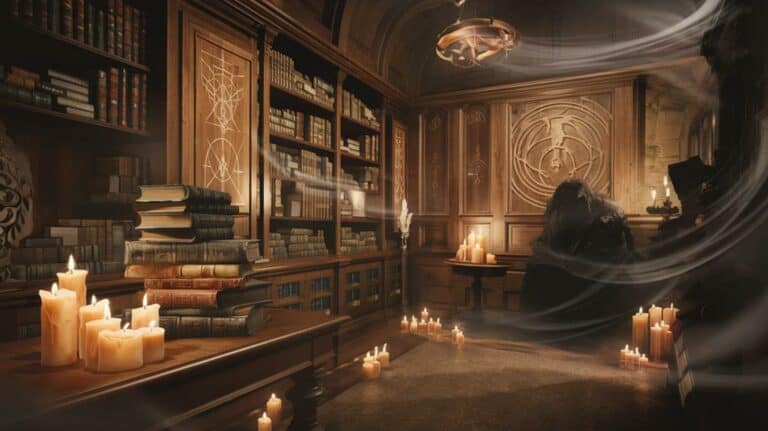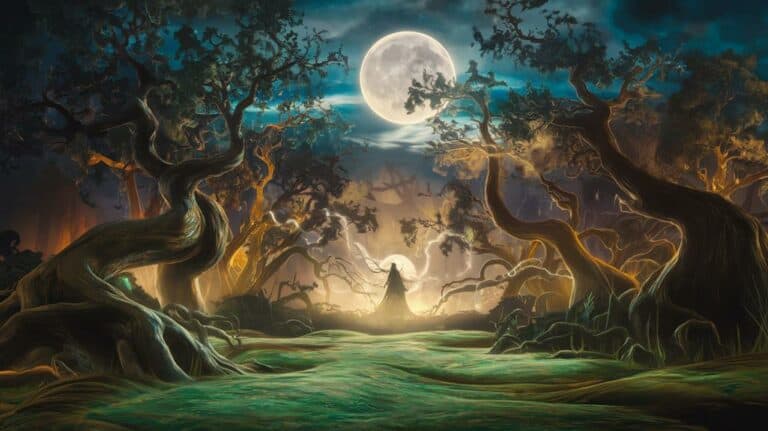Medieval Vs Modern Mysticism
You’re about to commence a fascinating journey through the changing landscapes of mysticism. As you explore the world of medieval and modern mysticism, you’ll discover how these two eras differ in their approaches to spirituality. Medieval mystics, such as Margery Kempe and Julian of Norwich, sought union with the divine through communal experiences and theological doctrines. In contrast, modern mysticism emphasizes individual, subjective experiences often detached from traditional religious contexts. This shift raises intriguing questions about the nature of spirituality. What happens when personal exploration takes precedence over collective practices, and how does this impact our understanding of the divine?
Historical Context of Mysticism
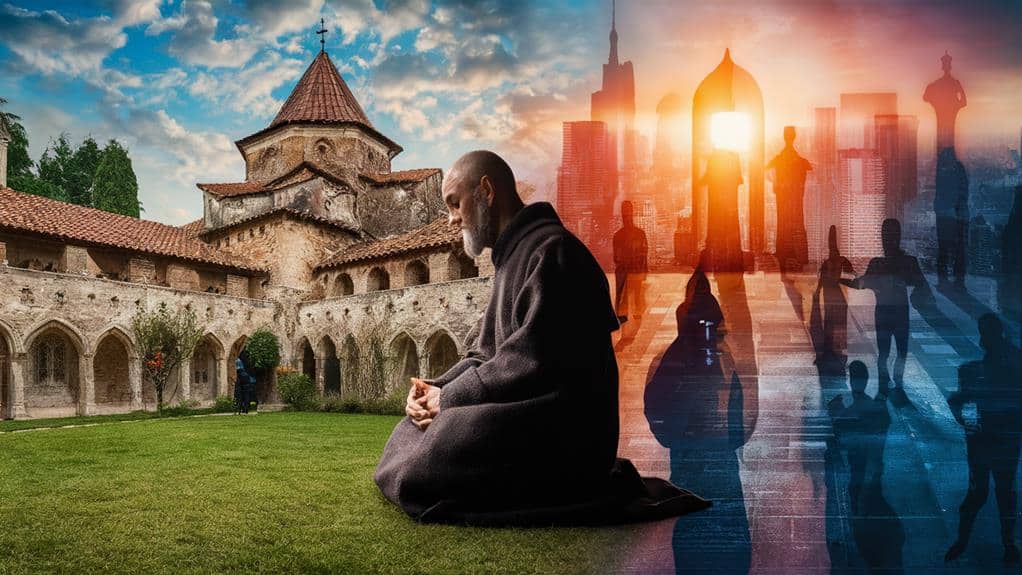
The tapestry of mysticism has been intricately woven over centuries, evolving considerably between its medieval and modern forms. As you investigate this rich history, you find yourself immersed in a world where spiritual experiences and interpretations varied greatly across time.
Medieval mysticism, for example, was deeply rooted in Christian traditions, emphasizing direct, personal experiences of the divine and the quest for union with God. This era saw the rise of apophatic and affective mystic traditions, with the former focusing on the paradoxical recognition that reason and knowledge must be abandoned to achieve unity with the divine, and the latter emphasizing the emotional, physical, and sensory aspects of mystical union.
In contrast, the modern understanding of mysticism has narrowed, often isolating individual experiences from larger doctrinal concerns and focusing on a singular goal: union with the Absolute, the Infinite, or God. This shift reflects the influence of various movements, including Romanticism and Perennialism, which have shaped contemporary perceptions of mysticism.
As you explore these historical contexts, you’re invited to ponder the complex and evolving nature of mystical experiences, their interpretations, and their impact on individual and collective spirituality.
Medieval Mystical Traditions
Within medieval Christian traditions, you find two primary mystical paths unfolding across Europe: the apophatic and affective traditions. The apophatic approach, exemplified by figures like Meister Eckhart, emphasizes the unknowability of God and seeks a union with the divine beyond all conceptual understanding. This path involves a purging of the intellect to make room for a direct experience of God’s presence.
In contrast, the affective tradition, seen in the works of Julian of Norwich and Catherine of Siena, focuses on the emotional and personal connection with God, often using vivid imagery and introspection to explore the depths of the divine-human relationship.
These mystical traditions, while distinct, share a common goal: to transcend the limitations of the human condition and achieve a state of spiritual unity with God. The practices of these mystics, including contemplation, asceticism, and deep prayer, were designed to purify the soul and open it to the divine.
Through these paths, medieval Christian mystics sought not just knowledge of God but a profound, transformative experience that would alter the very essence of their being. In their pursuit, they provide a powerful example of the human quest for transcendence and the divine.
The Shift to Modern Mysticism

You’ve explored the medieval Christian traditions, where apophatic and affective mysticism offered distinct yet complementary paths to union with God. This rich tapestry of spiritual practices and theological reflections forms the backdrop against which modern mysticism emerges.
As you shift into the domain of modern mysticism, you find a landscape notably transformed. Under the influence of 19th-century Romanticism, the focus on individual experience and the pursuit of transcendental realities became more pronounced.
The definition of mysticism narrowed, emphasizing the goal of achieving union with the Absolute, the Infinite, or God. This contemporary understanding often veers away from the complexity and variety of medieval mysticism, where doctrine and experience were interwoven.
Today, you might find modern mystics embracing a broader spectrum of religious traditions, influenced by perennialism, which blurs the lines between various esoteric practices.
In this change, the historical and cultural contexts of mysticism are reevaluated, inviting a fresh exploration of the human quest for the divine. As you investigate deeper, you’re encouraged to reflect on how these changes affect your understanding of mysticism and its evolving role in human experience.
Philosophical Differences
Beyond the surface-level transformations in mysticism from medieval to modern times, profound philosophical differences emerge.
You notice that medieval mysticism often emphasized direct, personal experiences of the divine and the quest for union with God, deeply rooted in theological doctrine and liturgical practices. This perspective intertwined experience with distinct beliefs, highlighting the interconnectedness of religious life with broader doctrinal concerns.
In contrast, modern mysticism frequently takes a more individualistic and subjective approach, focusing on personal experience as a standalone, almost autonomous entity.
It sometimes neglects the doctrinal foundations that underpin mystical experiences, leading to a reversal of the relationship between truth and experience. This shift reflects broader societal changes, where modern mysticism often seeks to satisfy a desire for mystery and transcendence in a world dominated by consumerism and practicality.
It emphasizes the personal and emotional, often at the expense of traditional theological structures. This difference in philosophical grounding greatly alters the nature and purpose of mystical experiences, inviting you to contemplate the implications of these changes for contemporary understandings of spirituality and religious practice.
The Role of Subjective Experience
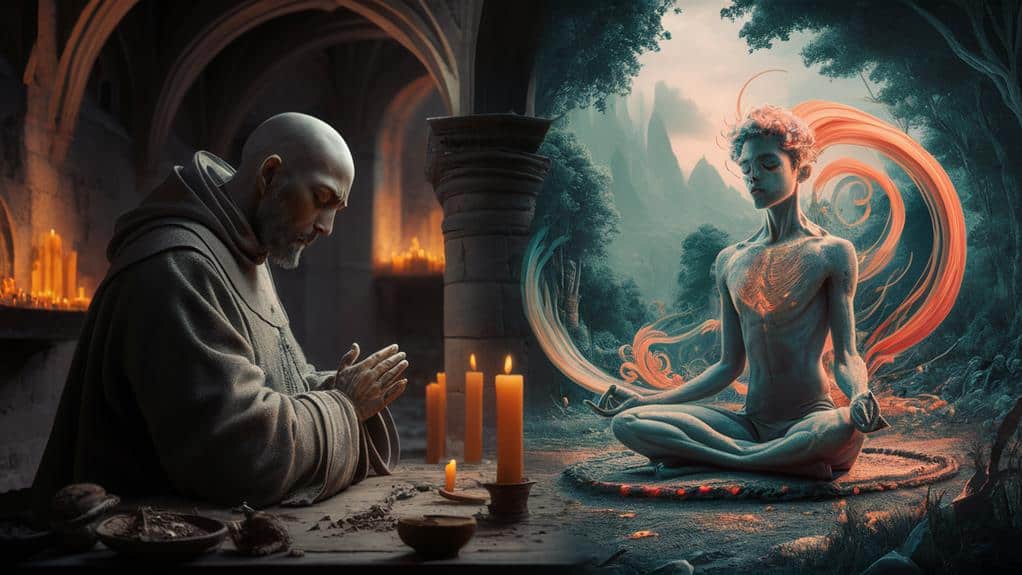
The shift towards a more individualistic and subjective approach in modern mysticism raises questions about the role of subjective experience in shaping mystical understandings. You find yourself contemplating the stark contrast between medieval and modern mysticism, where the former often emphasized communal and liturgical aspects, while the latter focuses on personal, internal experiences.
Medieval mystics like Margery Kempe and Julian of Norwich described their visions and interactions with divine figures in vivid detail, yet their experiences were deeply rooted in the religious and social contexts of their time.
In contrast, modern mysticism often isolates subjective experience from broader religious and cultural frameworks. This isolation can lead to a loss of collective meaning and a fragmentation of spiritual experiences. However, it also allows for a more intimate and personal exploration of the divine.
You’re invited to reflect on how this shift impacts your own understanding of mysticism and the role of subjective experience in your spiritual journey. Does the emphasis on individual experience enhance your connection to the divine, or does it risk losing the communal richness of medieval mysticism? This question invites you to investigate deeper into the heart of mystical experience.
Cultural Implications of Mysticism
Mysticism’s cultural implications are multifaceted and have evolved considerably between medieval and modern times. As you explore the subject, you’ll find that medieval mysticism was rooted in a religious and spiritual framework that permeated every aspect of life.
In contrast, modern mysticism often seeks to separate the spiritual from the religious, embracing a more individualistic and experiential approach.
In medieval times, the pursuit of mysticism wasn’t only a deeply personal endeavor but also a communal and liturgical one, often expressed through rituals and devotion to sacred texts.
This cultural context allowed for intense spiritual experiences to be perceived as sacred and positive, rather than as signs of mental instability.
However, with the secularization of society and the rising influence of scientific rationalism, the perception of mysticism shifted, leading to a narrowing of its definition and a focus on psychological interpretations.
Conclusion
As you ponder the vast expanse between medieval and modern mysticism, you’re invited to reflect on the profound shifts in human understanding. From collective, doctrine-bound pursuits of divine union to individual, subjective explorations of the sacred, the essence of mysticism has transformed. This evolution reveals deeper cultural currents, as personal transcendence now often trumps communal practices. In this quiet contemplation, you may find the nuances of historical context illuminating the complex tapestry of human spirituality.



